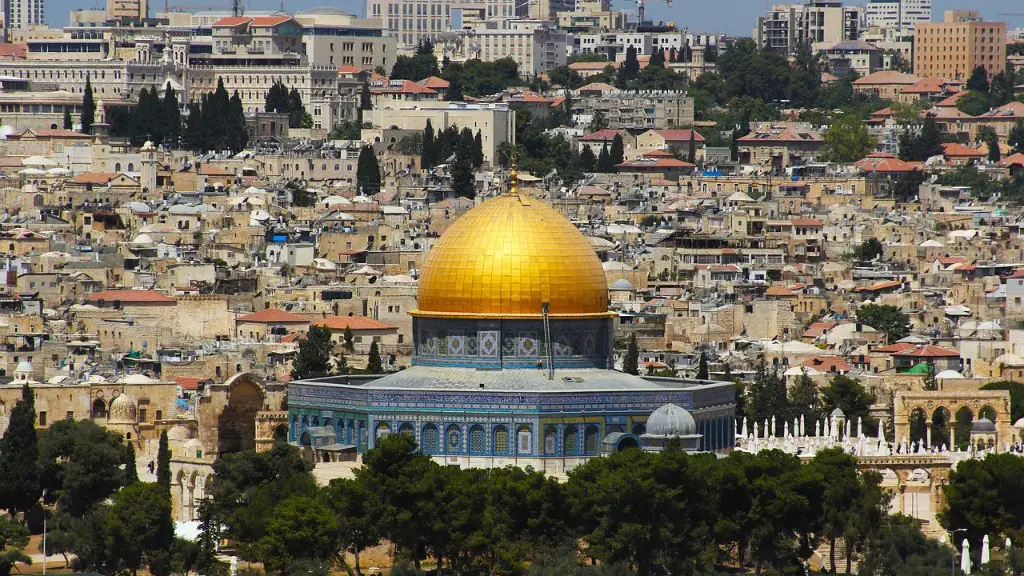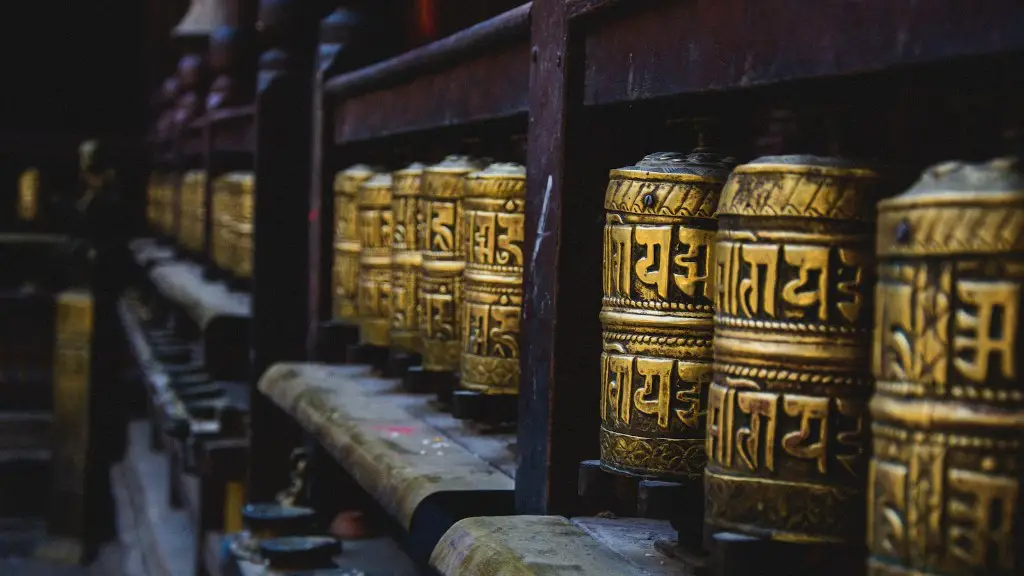How Eastern Orthodox Christianity Differs From Catholicism
Eastern Orthodox Christianity and Catholicism, or Roman Catholicism, represent different branches of Christian belief and worship. While both share the same core beliefs, there are important theological and practical differences between the two. Given that the two churches represent a combined population of more than 1.2 billion people, it’s important to understand their differences.
Eastern Orthodoxy and Catholicism agree on the major tenants of Christian faith, such as the nature of Jesus Christ, his life, his death, and his resurrection. In addition, they also agree on core doctrines, such as the need for salvation, the importance of the Church, and the essential Trinitarian nature of the Godhead. Despite these points of concurrence, there are major differences that define the two churches, their history, and their beliefs.
Historically, the main difference between Eastern Orthodoxy and Roman Catholicism can be found in the authority structures of each. Catholicism has been greatly influenced by the hierarchical structure of the Roman Empire, which delegated great power to the Pope as the head of the Church. By contrast, the Eastern Orthodox tradition is notably decentralized and highly autonomous, with each local church being led by a bishop rather than having one single bishop as the head.
In addition to the papacy, Catholicism defines its faith based on seven sacraments, whereas Eastern Orthodoxy only recognizes five. The two additional sacraments in the Catholic Church are confirmation and penance. These two additional sacraments give Catholics the opportunity to perform various forms of penance for the sins they have committed and to receive a sign of the sacrament.
Theologies and liturgies also differ. Catholicism follows an array of rituals and liturgical customs that have evolved over time, while Eastern Orthodoxy follows a more traditional set of rituals that were largely set in stone by church fathers in the sixth century. Eastern Orthodoxy also places a greater emphasis on ancient Christian writings and tradition, while Catholicism places more importance on modern forms of scriptural interpretation.
Canon Law
In terms of canon law, Catholicism significantly surpasses Eastern Orthodoxy. Roman Catholicism has a vast body of canon law that directs the actions of members of the Church, and it has a formalized structure of tribunals to enforce this law. Eastern Orthodoxy does not have a formal set of laws or tribunals and relies instead on the authority of its clergy and members to observe tradition and practice the teachings of the faith.
When it comes to the subject of evolution, Catholics see it as compatible with their faith, though the Catholic Church does not promote evolution as a fact in itself. However, the Eastern Orthodox Church views evolution very differently and is much more dubious about its role in explaining the origins and development of life, largely because evolution is seen as being in opposition to the doctrine of creationism.
Similarly, in the areas of reproductive technology and abortion, there are differences between the two branches of Christianity. Catholicism holds a more conservative view on these subjects, while Eastern Orthodoxy is more willing to accept some forms of reproductive technology and permits abortion under certain circumstances.
Modern Practices
When it comes to modern practices and culture, Catholic and Eastern Orthodox traditions are quite different, particularly in relation to the role of women and their place in the church. In Catholicism, priesthood is restricted to males and women are only able to take up certain roles and positions within the church, including those of nuns and religious sisters. Eastern Orthodoxy, on the other hand, allows for both males and females to become priests and offers more opportunities for women to be involved in liturgical activities, such as cantoring and iconography.
Moreover, the Catholic Church has a centralized structure of government, wherein the decisions and actions of the Pope and bishops take precedence over those of local councils. This hierarchical structure is less common in Eastern Orthodoxy, where the rulings of local councils are seen as paramount.
Finally, the Catholic Church maintains an official set of doctrines known as the Nicene and Apostolic Creeds, which must be professed and affirmed by members of the Church. In Eastern Orthodoxy, there is no official set of creeds, though many parishes and branches of the Church will adopt particular creeds and teachings.
Attitudes Towards Other Faiths
The Catholic Church holds a generally hierarchical view of other religions, with Christianity seen as supreme. It also states that members of other denominations are outside of the Catholic faith and cannot partake in full communion with the Church. Eastern Orthodoxy, by contrast, recognises other forms of Christianity as being part of the same faith and encourages interfaith dialogue and discussion.
In the area of ecumenism, Catholic and Eastern Orthodox traditions also vary. The Catholic Church actively seeks to engage with other Christian denominations to promote unity and understanding, while Eastern Orthodoxy is more likely to pursue a policy of separation, in order to emphasise the distinctiveness of Eastern Orthodox Christianity among other branches of the faith.
Scriptures & Rites
Scriptures also differ between Eastern Orthodoxy and Catholicism. Catholics recognise the entire Bible, both Old and New Testaments, as their source of faith. Eastern Orthodoxy, however, only acknowledges the New Testament and considers the Old Testament to be of secondary importance.
Catholics rely on a combination of rites, such as the Latin Rite and the Eastern Rite, and frequently add new rites to their practices. Eastern Orthodoxy, on the other hand, does not recognise new rites, but instead focuses on traditional practices, such as the Eastern Orthodox Divine Liturgy.
The two branches of Christianity are also distinct in terms of their use of icons. Catholics often use religious images as part of their liturgy, while Orthodoxy sees them as a form of veneration and has a special reverence for the images of Christ, the Virgin Mary, and the saints.
Attitude Towards Authority
The attitude towards authority is where the two branches of Christianity arguably differ the most. In Catholicism, the authority of the Pope is absolute and unchallengeable. In Eastern Orthodoxy, on the other hand, the local councils and bishops are seen as having authority that is equal to or potentially even greater than that of the Patriarch. Consequently, Eastern Orthodoxy tends to interpret scripture, theology, and doctrine in a more flexible and autonomous manner, whereas Catholicism follows a more rigid and unified set of beliefs.
Structure & Governance
The Catholic Church is highly hierarchical and is organised in a centralised fashion, with power exercised by the Pope and bishops. The structure of the Eastern Orthodox Church, by contrast, is much more decentralised, and local churches have considerable autonomy in terms of their governance. In Eastern Orthodoxy, there is no single ruling body, and decisions are made collectively by local councils.
In terms of the doctrine and theology, there are also differences between the two branches. Catholicism tends to put more emphasis on scriptural interpretation, while Eastern Orthodoxy places more importance on the writings of the early Church Fathers.
Practices & Beliefs
The practices and beliefs of the two branches of Christianity also diverge in a number of areas. In Catholicism, the seven sacraments are standard and must be followed, while Eastern Orthodoxy only recognises the five traditional sacraments. Eastern Orthodoxy also has a more rigid approach to rituals and liturgies, whereas Catholicism has embraced new forms of worship.
Catholicism also places a great degree of emphasis on papal infallibility and on the supremacy of the Pope in matters of faith and morals. By contrast, Eastern Orthodoxy rejects papal infallibility and instead places great importance on the collective wisdom and authority of the local church councils.
In terms of the role of women in the Church, there are also differences. In Catholicism, women are excluded from any form of ministerial role, while Eastern Orthodoxy permits female priests, and a few churches have adopted the concept of female ordination.
Conclusion
Eastern Orthodoxy and Catholicism are similar in a number of ways, yet fundamentally different in a number of other areas. Their histories, theologies, and governance structures are all vastly different, as are their attitudes toward other religions, the use of sacred scriptures, and the role of women in their respective churches. While the two branches of Christianity share many of the same core beliefs, their differences in belief and practice make them distinct from one another.


